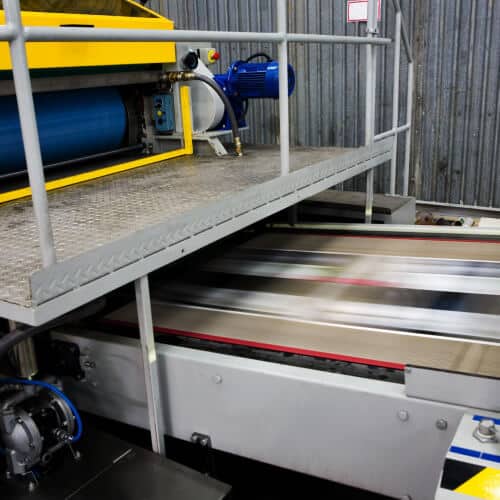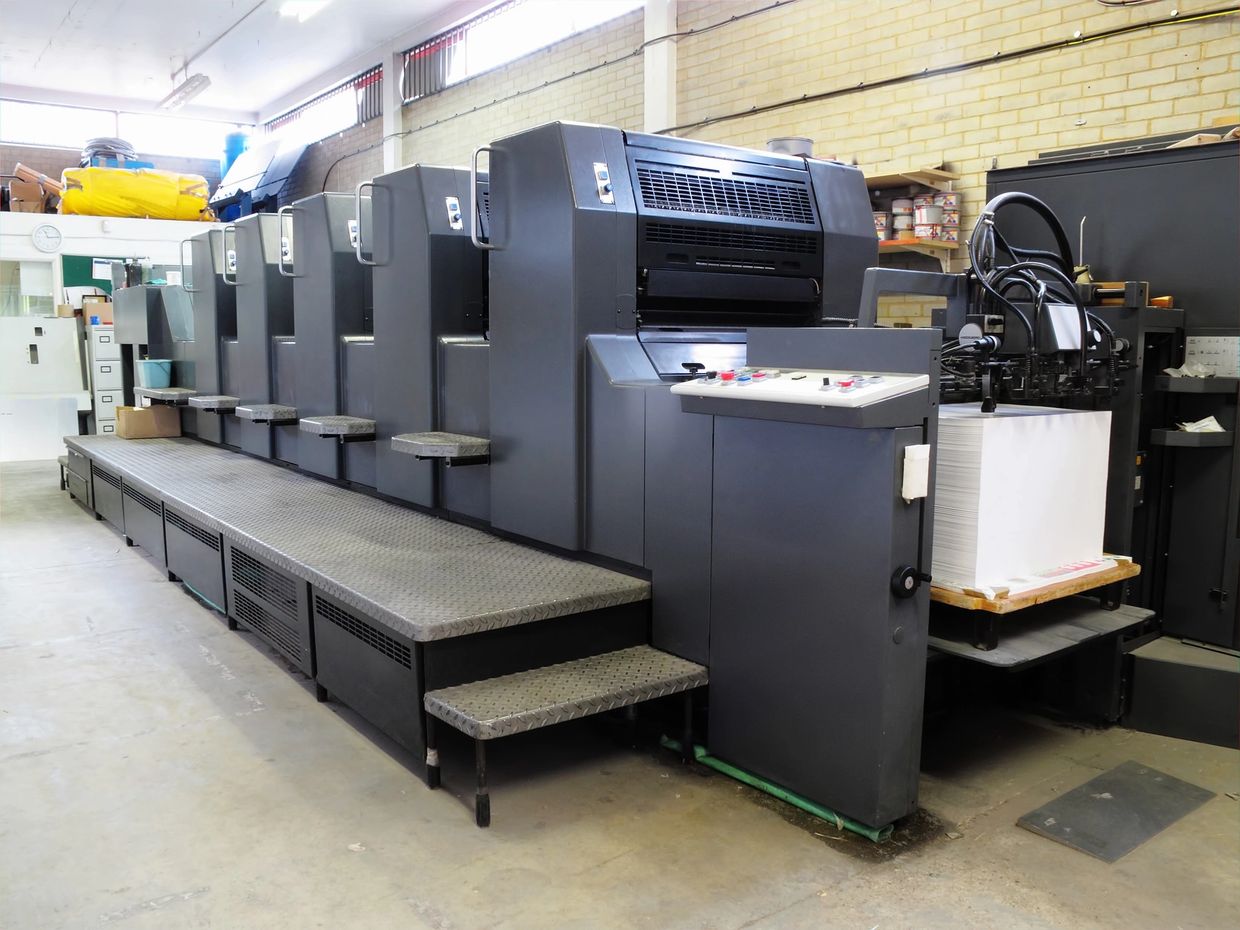Design Tips to Maximize Impact with litho printing
Wiki Article
The Essential Guide to Comprehending Litho Printing and Its Applications
Litho printing stands as a significant approach in the printing market, rooted in the concepts of oil and water repulsion. This method not just delivers top quality photos however additionally deals with different commercial needs. Its applications vary from advertising and marketing products to product packaging, showcasing its flexibility. As the market adapts to new modern technologies, the advancement of litho printing questions regarding its future and significance in an electronic landscape. What exists ahead for this enduring method?
What Is Litho Printing?
Litho printing, a widely made use of printing method, counts on the principle of oil and water repulsion. This approach utilizes a flat printing surface, typically a metal plate, which is treated to assure that the photo areas are responsive to oil-based inks while the non-image areas repel them. The procedure begins with the creation of a picture on the plate, commonly with drawing or photographic ways. Once the image is prepared, home plate is moistened with water, complied with by the application of ink. The ink sticks only to the picture locations, permitting exact recreation of graphics and message. Litho printing is preferred for its ability to generate top notch prints with fine detail and vivid shades. It is typically made use of in business applications, consisting of newspapers, magazines, and product packaging, showcasing its convenience and efficiency in meeting the needs of modern printing.The History of Lithography
Lithography is a contemporary printing staple, its beginnings map back to the late 18th century when German dramatist Alois Senefelder invented the strategy in 1796. Developed as a method for duplicating texts and photos, lithography utilized a flat rock surface area to create prints through a chemical process. Senefelder's advancement enabled better versatility and artistic expression compared to previous printing methods.By the 19th century, lithography obtained extensive approval, coming to be a popular option among artists and authors. It made it possible for the mass production of illustrations, maps, and posters, significantly influencing the printing industry. The technique additionally evolved with the introduction of lithographic presses, improving performance and quality.As the industrial revolution progressed, lithography adapted to meet the demands of commercial printing, paving the means for modern-day applications. Today, it continues to be a necessary method in various industries, consisting of publishing, product packaging, and great art reproduction.Exactly How Litho Printing Functions
A crucial attribute of litho printing is its dependence on the concept of oil and water repulsion - litho printing. In this procedure, photos are moved from a level surface, usually a metal or polymer plate, to paper. Home plate is dealt with so that the locations meant for printing attract ink, while the non-image locations repel it as a result of their affinity for water. The printing begins by wetting the plate with water, which adheres to the non-image locations. Ultimately, an oil-based ink is applied, sticking only to the intended picture areas.When the plate enters into contact with the substrate, the ink is moved, producing a print. The litho printing procedure can creating premium pictures with fine information. It is commonly utilized for mass production as a result of its efficiency and consistency, making it a recommended technique for industrial printing applicationsBenefits of Litho Printing
One notable advantage of litho printing is its capability to generate high-quality photos regularly, making it an optimal option for business projects. This printing method makes use of a flat printing plate, making sure also ink circulation and sharp information. Litho printing is also renowned for its shade accuracy, making it possible for dynamic and true-to-life reproductions, which is necessary for branding materials.Moreover, it supports a variety of substrates, consisting of paper, cardboard, and also particular plastics, boosting its convenience. The procedure is cost-effective for large runs, as economies of range minimize per-unit prices. Additionally, litho printing has a fast turn-around time, enabling efficient manufacturing schedules.Its durability additionally indicates that printed materials resist fading, making sure that the end product preserves its aesthetic allure over time. On the whole, these benefits make litho publishing a recommended choice across different markets, adding to its enduring popularity.
Applications of Litho Printing in Organization
As organizations increasingly look for trustworthy and high-quality printing services, litho printing becomes a key gamer in different applications. This technique is particularly preferred for generating advertising and marketing products such as brochures, leaflets, and directories, thanks to its ability to supply vibrant colors and sharp pictures. In enhancement, litho printing is frequently used for packaging services, allowing firms to produce appealing tags and boxes that improve item appeal.In the field of corporate identification, litho printing contributes in creating specialist stationery, company cards, and marketing merchandise, which assist enhance brand recognition. Additionally, it is widely made use of in the publishing industry for published materials such as books and publications, where regular high quality is vital. Overall, litho printing's adaptability and performance make it a vital tool for organizations aiming to connect effectively and develop a solid market presence.Artistic Use Litho Printing
Litho printing acts as a flexible tool in the domain name of printmaking, offering musicians an unique method to express their creative thinking. This technique enables a wide range of artistic applications, from standard prints to modern interpretations. By discovering the nuances of litho printing, musicians can harness its distinctive qualities to enhance their work.
Printmaking Techniques Summary
The virtuosity of printmaking encompasses a diverse array of methods, with litho printing sticking out for its one-of-a-kind technique to picture production. This method counts on the concept of oil and water repulsion, enabling artists to draw directly onto a limestone or steel plate with an oily medium. Once find more prepared, home plate is dampened and inked, moving the photo onto paper through pressure. Litho printing is commemorated for its capability to generate great details and rich tonal variations, making it a preferred selection among artists. In addition, the process is flexible, fitting both standard techniques and contemporary adaptations. This versatility enables litho printing to bridge numerous artistic designs, improving the printmaking landscape with its unique features and capabilities.Unique Artistic Applications
Exploring the unique imaginative applications of litho printing discloses its exceptional flexibility in various imaginative fields. Artists make use of litho printing to produce detailed styles and structures, permitting meaningful and in-depth works. The procedure assists in the recreation of brilliant colors, making it ideal for illustrations and art prints. Numerous modern musicians accept lithography for its capability to combine typical methods with contemporary ideas, resulting in cutting-edge art work. In addition, litho printing is typically employed in the manufacturing of minimal version prints, enhancing their value and appeal. The tactile top quality of litho prints adds an unique measurement, bring in enthusiasts and art lovers alike. On the whole, litho printing stays a considerable medium for artistic expression, connecting classic approaches with modern imagination.The Future of Litho Printing in a Digital World
As the printing sector evolves, litho printing faces the challenge of integrating digital innovations to remain relevant. Methods concentrated site web on electronic assimilation, along with trends in sustainability and innovation, will certainly form its future - litho printing. Comprehending these characteristics is necessary for market stakeholders looking to adjust to a quickly changing landscapeDigital Assimilation Techniques
An expanding number of litho printing firms are accepting digital integration approaches to remain affordable in a significantly electronic landscape. By integrating electronic workflows, these companies can simplify processes and boost performance. This integration permits real-time information management and enhanced communication in between divisions, lowering turn-around times significantly. Additionally, electronic devices allow better personalization and personalization of published materials, satisfying particular consumer demands. Firms are likewise taking on hybrid printing services that combine traditional litho techniques with digital technologies, offering adaptability in manufacturing. Leveraging information analytics aids in understanding market fads and consumer preferences, enabling services to make educated decisions. On the whole, digital assimilation is ending up being crucial for litho printing companies aiming to innovate and reply to developing market needs.Sustainability and Development Fads

Regularly Asked Concerns
What Products Are Commonly Made Use Of in Litho Printing?
The products typically made use of in litho printing consist of aluminum plates, ink, water, and paper. Each component plays an essential duty in the printing process, making sure top notch image reproduction and effective transfer of ink onto the substratum.Exactly How Does Litho Printing Compare to Digital Printing?
Litho printing provides exceptional color consistency and quality for large runs, while digital printing masters brief runs and personalization. Each method has unique benefits, dealing with various needs based on manufacturing scale and cost-efficiency.What Is the Common Turn-around Time for Litho Printing Projects?
The typical turnaround time for litho printing jobs differs, normally varying from a couple of days to a number of weeks. Factors influencing this timeframe include project complexity, amount, and called for finishing processes, impacting total production timetables.Can Litho Printing Accommodate Custom-made Sizes and Formats?
Litho printing can undoubtedly suit personalized dimensions and formats, enabling versatility in layout. This flexibility enables clients to achieve distinct print outcomes tailored to important source their specific needs, boosting the total effectiveness of their jobs.What Are the Ecological Impacts of Litho Printing?
The ecological impacts of litho printing consist of resource usage, chemical use, and waste generation. Innovations in sustainable practices and environmentally friendly products are gradually lowering these adverse results, promoting an extra eco accountable strategy to printing.Report this wiki page